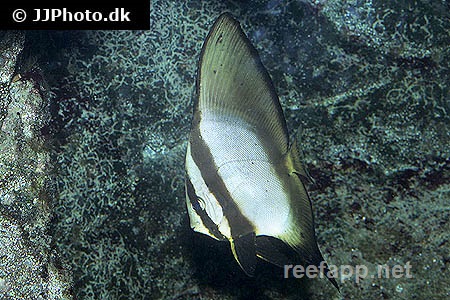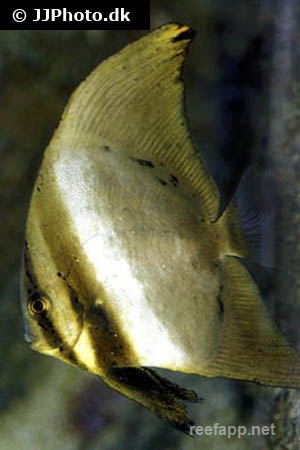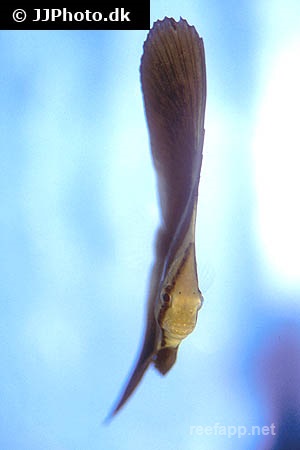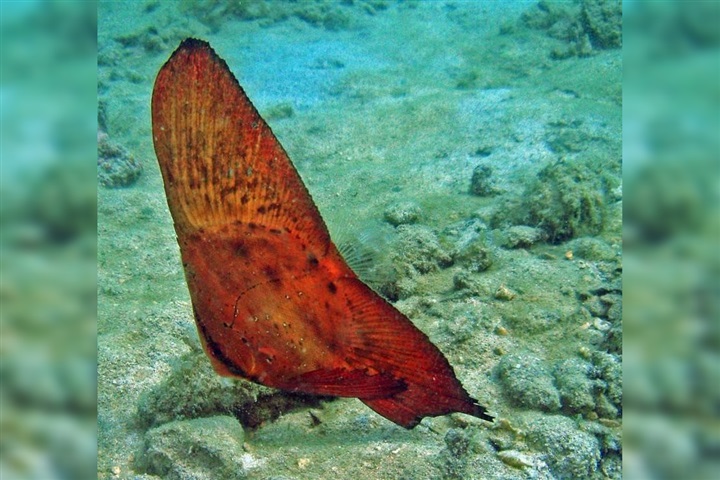Platax orbicularis







| Latin name | Platax orbicularis - (Forsskål, 1775) |
|---|---|
| Local name | Orbicular batfish |
| Family | Ephippidae - Platax |
| Origin | East Indian Ocean, West Indian Ocean, Australia, Japan, The Red Sea, Indonesia, East Pacific, Central/West Pacific |
| Max length | 60 cm (23.6") |
| Minimum volume |
2000 l (528 gal) |
|---|---|
| Hardiness |
Average |
| Suitable for aquarium |
Suitable with care |
| Reef safe |
Not reef safe |
| Aggressiveness | Mostly peaceful but might be aggressive towards similar species |
| Recommended |
Larger crustaceans (Shrimp, crabs...) Macroalgea (Eg. seaweed / nori) Other invertebrates Small crustaceans (Krill, mysis, artemia...) |
|---|---|
| Maybee |
Large polyp stone coral (LPS) Small polyp stone coral (SPS) Soft coral |
This species likes eating anemones.
This species poses a threat towards shrimps and crabs etc., which are relatively small.
This species is easily susceptible to Marine Ich (Cryptocaryon irritants), when stressed by other fish, bad water quality, or when relocated.
This species must be fed with an appropriately varied diet.
This species eats a great deal and demands an aquarium that can tolerate such a heavy load.
These fish may well hide themselves for a while, whilst getting acclimatized.
Do not disturb the fish while acclimating because it will prolong the process.
This species thrives best in an aquarium with overhangs and caves.
This species revels in swimming and requires an aquarium with ample space.
This species can be very shy when first introduced into a new aquarium.
More aggressive fish can be introduced after this species has acclimatized.
Batfishes are not well suited to coral aquaria, as they pose a threat to shrimps, anemones, corals and other invertebrates.
They grow fairly quickly, a small fish can grow to be 25 cm in height within a couple of months.
These fish will begin eating quickly, with the exception of Platax pinnatus, but will sometimes hide for a few days after being transported.
Be careful when catching the fish as their fins are easily damaged.
Batfishes should be fed with both algae based foods and different types of frozen food or seafood.
Many Spadefish cannot adjust to captivity and become much too big, but several species of the Batfish (Platax genus) can be kept in a large aquarium.
| Aquarium trade | Yes |
|---|---|
| Distribution | Indo-Pacific: Red Sea and East Africa to the Tuamoto Islands, north to southern Japan, south to northern Australia and New Caledonia. Recorded off the coast of Florida in the Western Central Atlantic (Ref. 51238). |
| English common names |
Round batfish Copper batfish Orbicular batfish Orbiculate batfish Batfish Circular spadefish batfish Circular batfish |
| French common names |
Feuilles de palétuviers Platax rond Poule d'eau Poisson chauve-souris orbiculaire |
| German common names |
Fledermausfisch |
| Danish common names |
Almindelig flagermusfisk |
Bob Fenner. Crazy About Batfishes, But Not Spades, Family, Ephippidae - Wet Web Media - (English)

